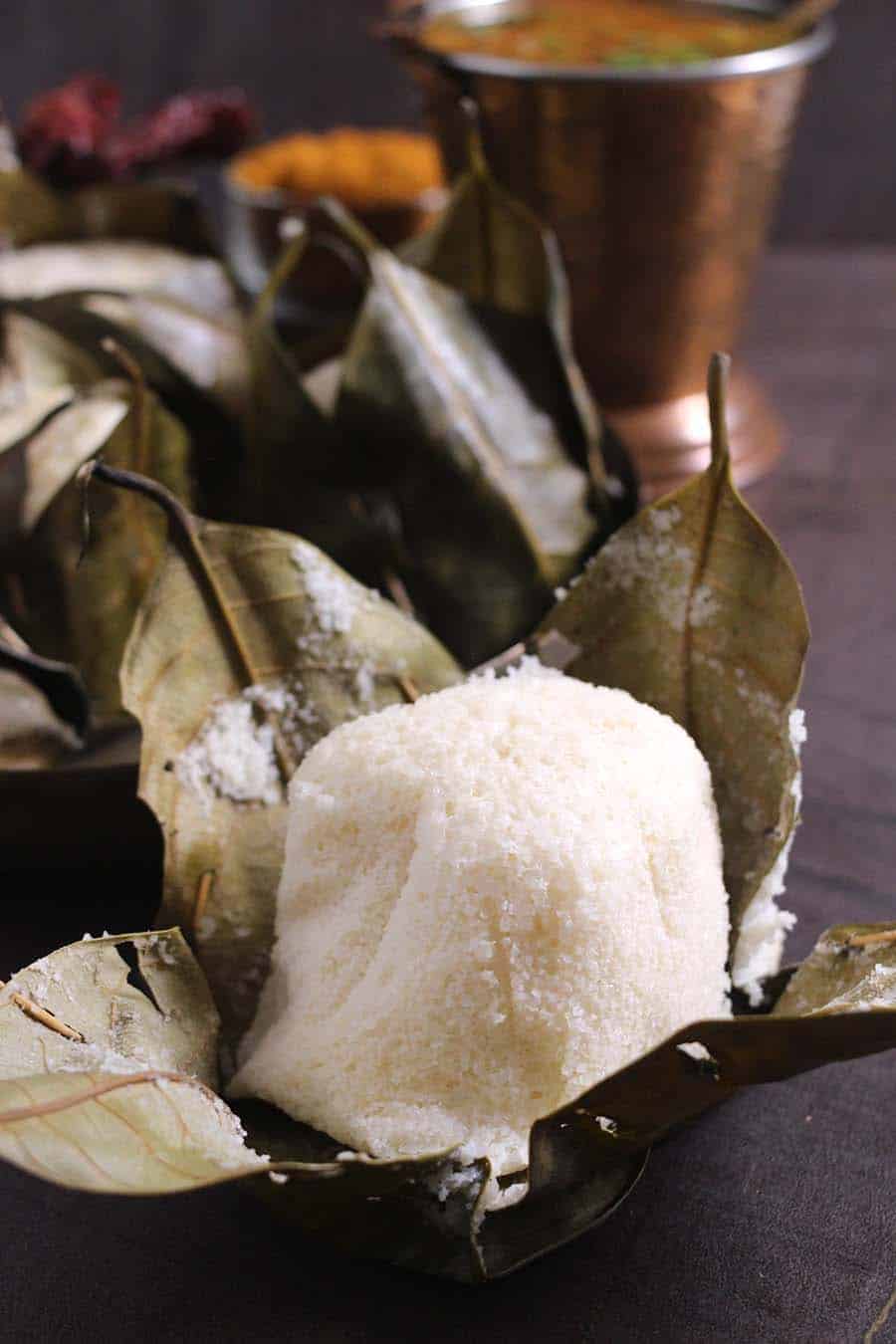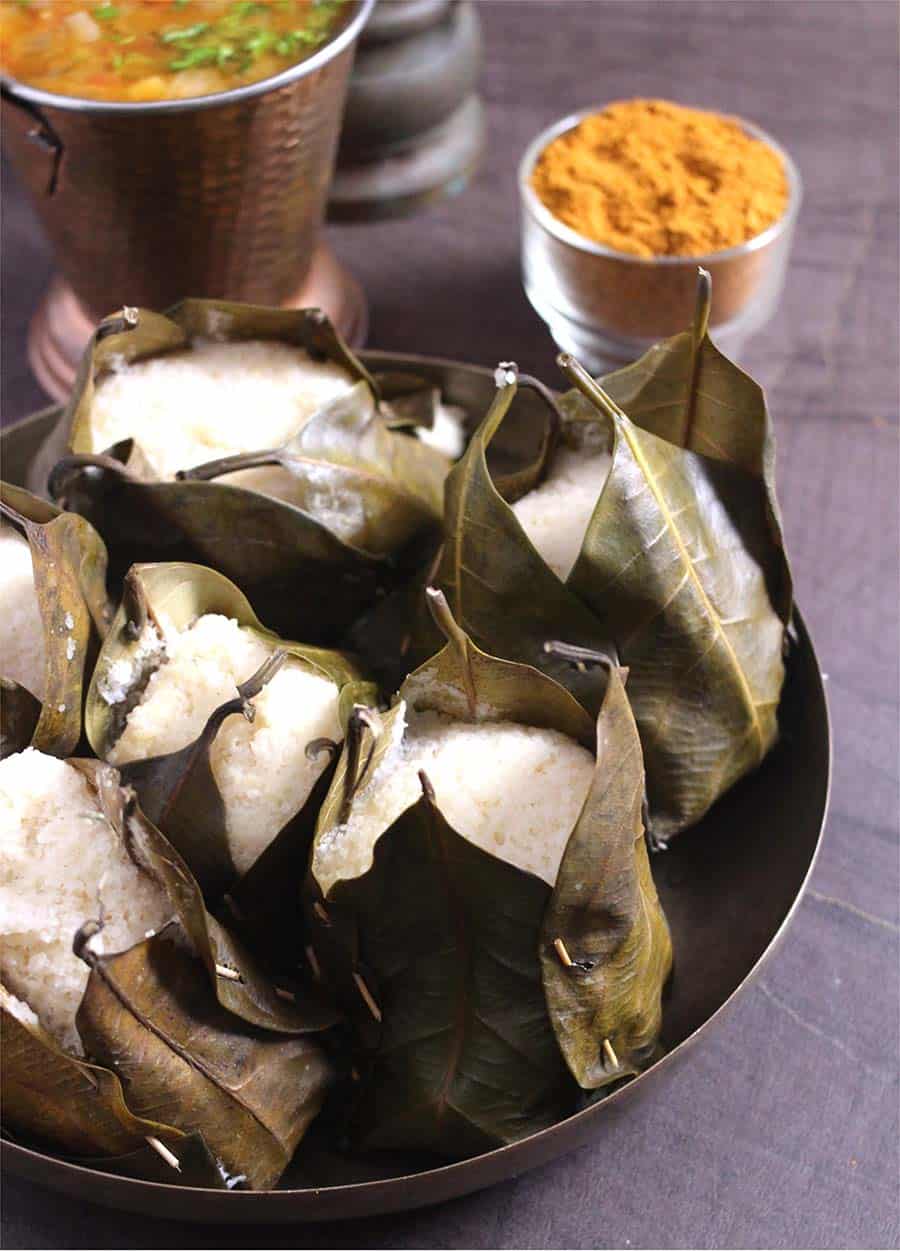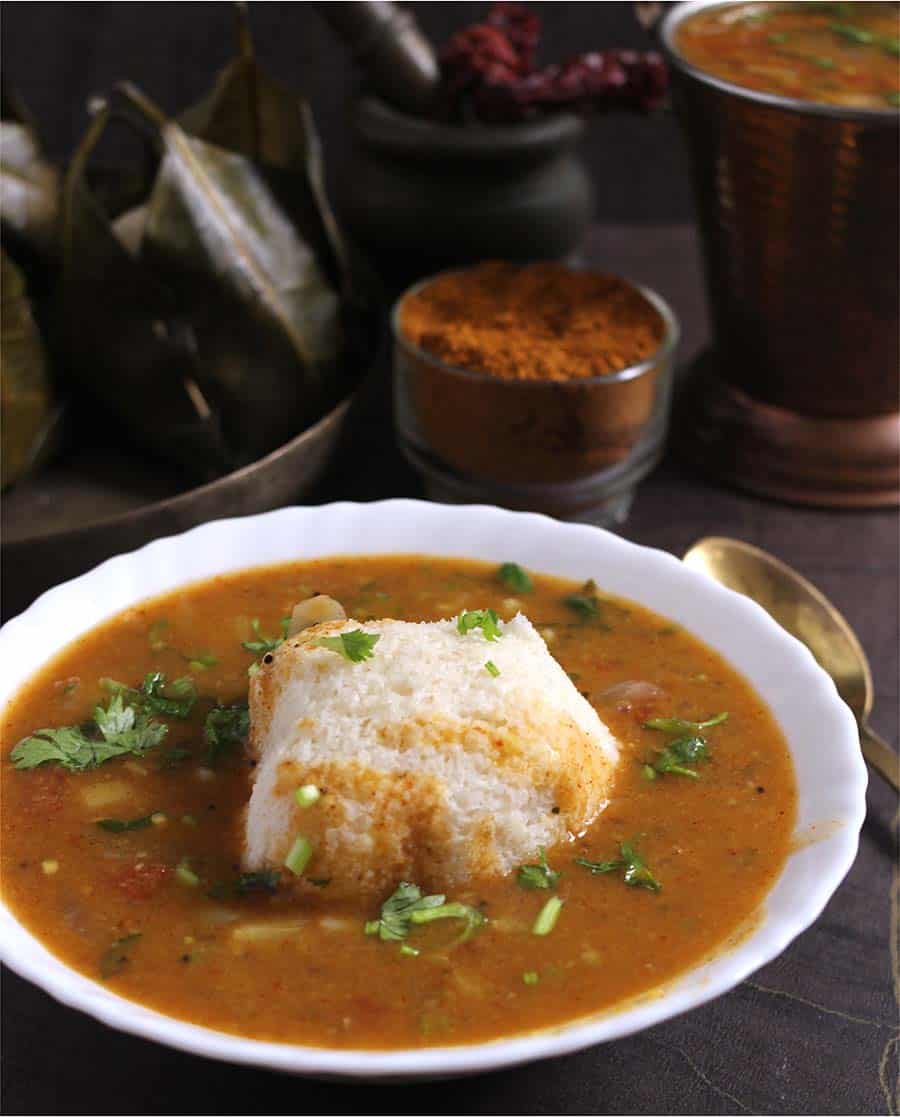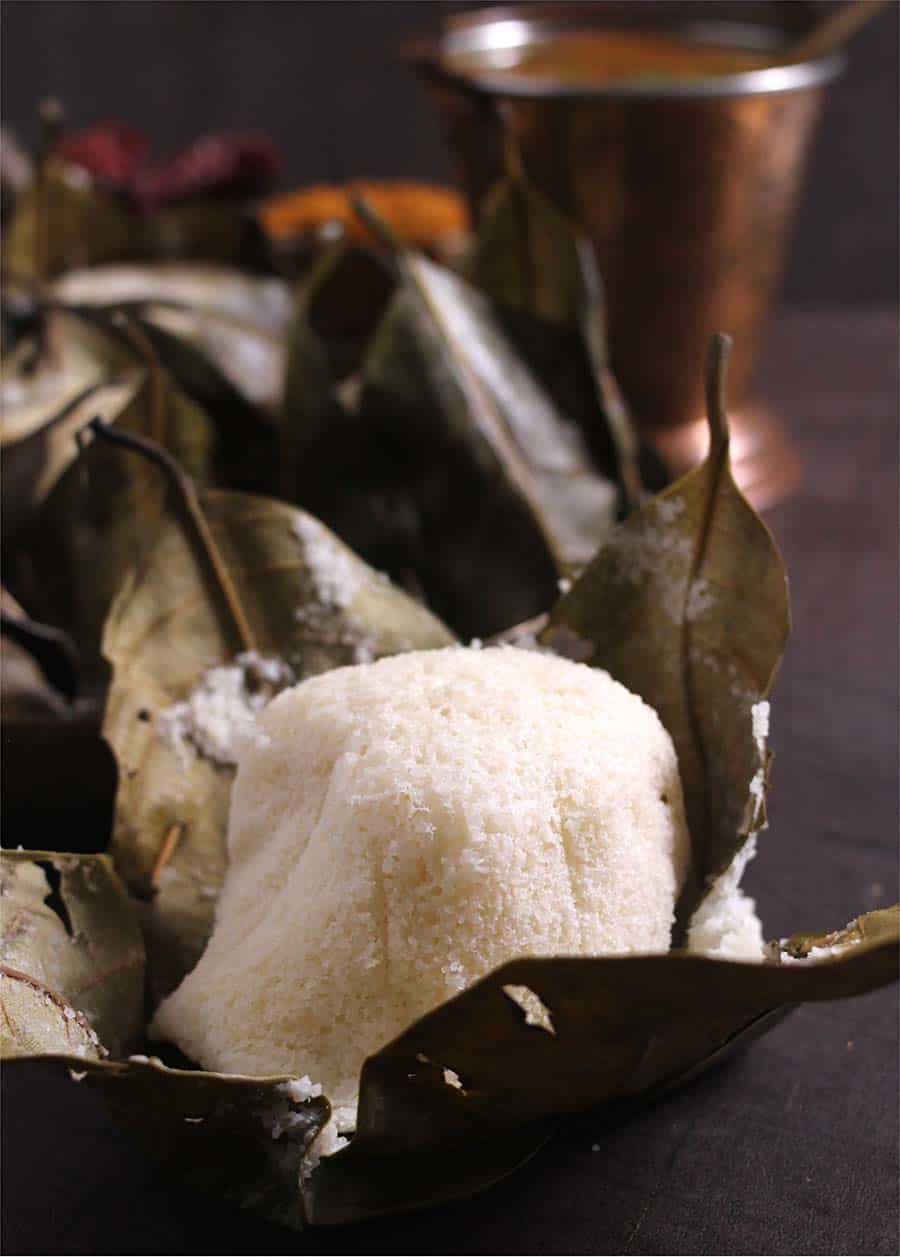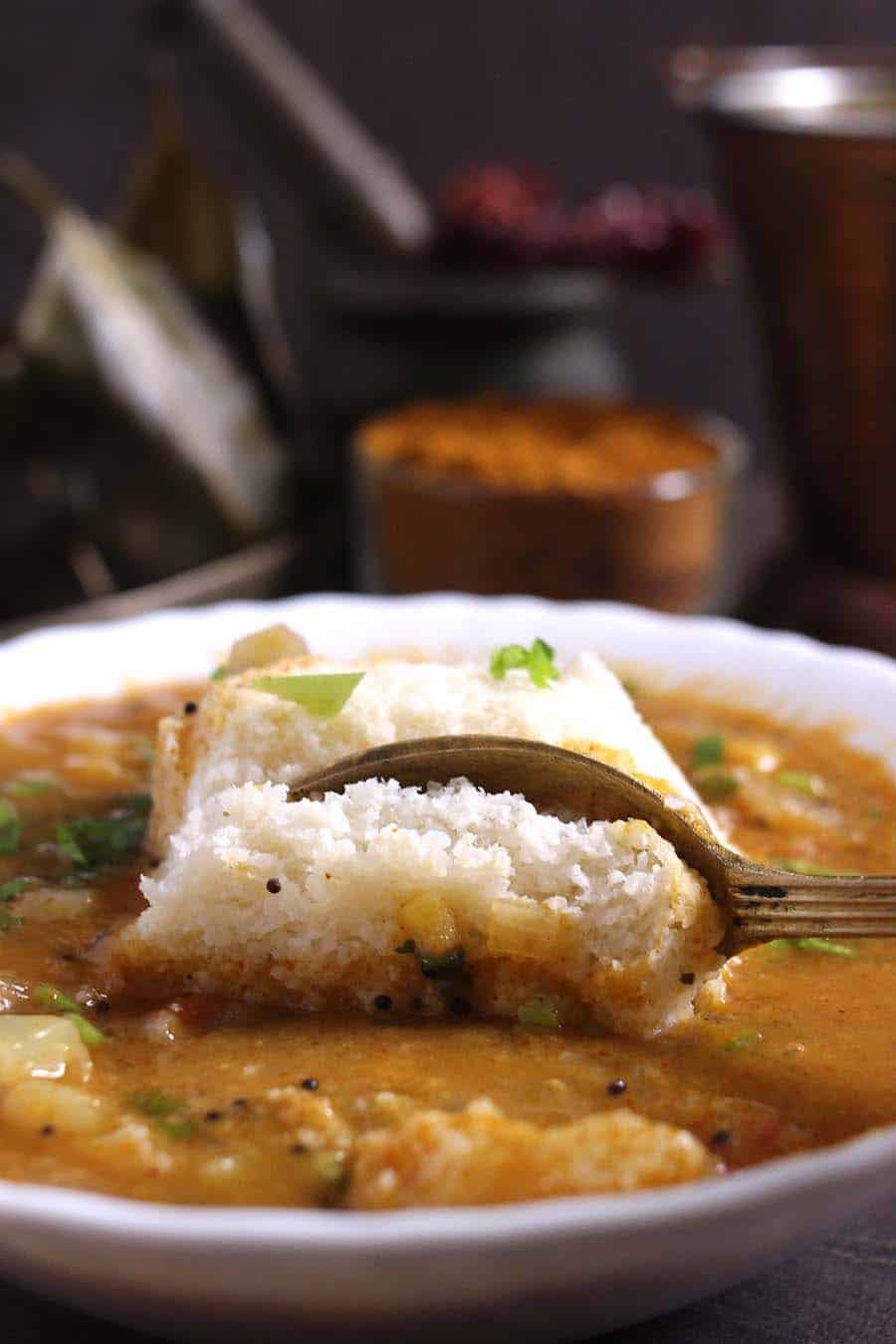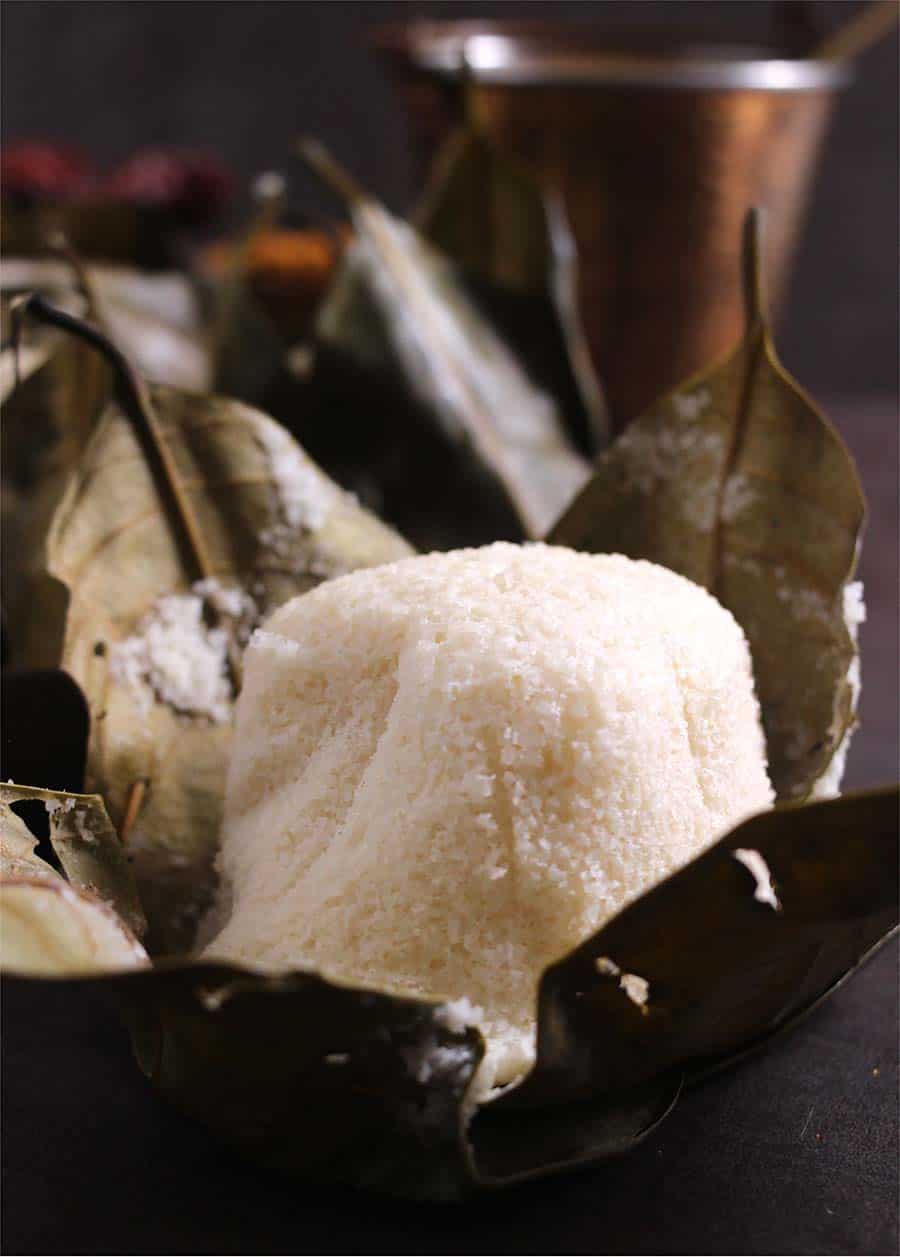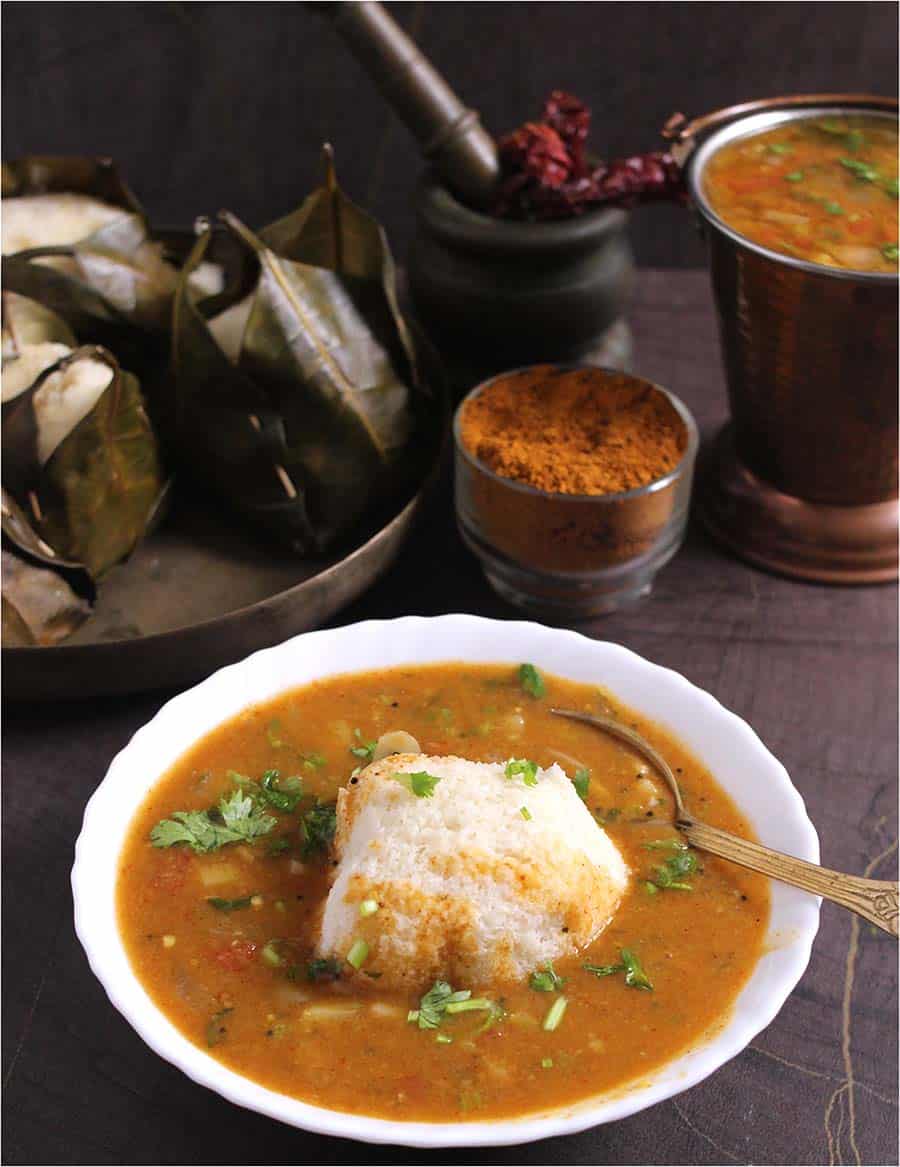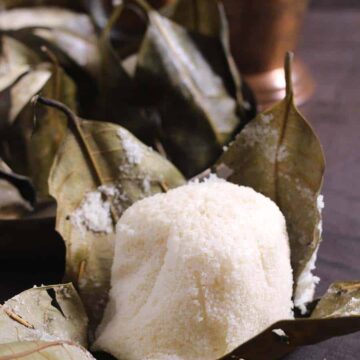The batter for idli and khotte is exactly the same 🙂 The only difference is instead of steaming it in idli plates or molds; we are steaming it in jackfruit leaves pocket.
WHAT IS KHOTTE KADUBU OR KHOTTO?
Khotte Kadubu or Hittu or Kotte or Gunda is another way of steaming idli batter in jackfruit leaves. It is one of the most popular and traditional recipes from the Coastal Karnataka region (Udupi, Mangalore) prepared for almost all special occasions and festivals like Janmashtami, Ganesh Chaturthi, etc. Four jackfruit leaves of equal sizes are weaved to form a cup or mold to which idli batter is added and steamed. Check out the making of khotte basket and jumbo khotto here The taste of khotte is different from traditional idli as you get the additional taste of jackfruit leaves.
Jackfruit leaves are easily available at my home as we have jackfruit trees in our backyard, and it is easy to turn the leaves into a mold; and most importantly, one can avoid the chore of cleaning idli molds. When you have a big family or are hosting or entertaining a large crowd, I recommend preparing kotte instead of idlis provided that jackfruit leaves are available in your town. The leaves can be easily composted for use in your home garden or used as feed for cattle.
It gives the idli a different aroma. No utensil cleaning (For me, cleaning idli plates is one of the time-consuming tasks.)
If you cannot find jackfruit leaves, simply steam idlis the way you have been doing all this while. If you want to know more about khotte, moode, and idli you can check my post on SABUDANA IDLI.
Idli, khotte, moode is considered healthy breakfast recipe. Idli is rich in fiber. Therefore, it is good for your bowel movement and keeps you full for a longer time, thus avoiding overeating.
Idli sambar is a emotion 🙂
Idli sambar or khotto sambhar is the traditional or routine breakfast in our home every Sunday. From my childhood to date, we know what we are eating for breakfast every Sunday morning - Idli sambar. And yes, there is a reason behind it. During our childhood, in fact, up until my marriage, our house used to be filled with guests all the time. My mom used to be busy in the kitchen doing some special item or the other. She also had the responsibility of getting us ready for school, doing all household chores, etc. My dad used to be busy with his morning routine and business. Therefore, we never used to get time to sit and have breakfast together on weekdays. So Sunday was the only day where we all could relax and have breakfast together and catch up on all that happened during the week.
As a large batch of idlis can be steamed at once, my mom did not have to spend time in the kitchen; rather, she could join us all at the dining table. That is why idli sambar was the fixed breakfast item on Sundays in our house and became a tradition. I really miss those days. Childhood is the best part of your life. Have fun with your kids whenever possible, guys—time flies. And yes, now after my three boys, tradition is changed in my new house. My boys, like their dad, love to eat idli all seven days a week, and in that way, I feel I am a lucky mom. Once the idli batter is prepared, breakfast is sorted for the next 3 to 4 days 🙂 Pausing my stories here, let’s go straight to the recipe, and I will share tips either in steps or at the end of the post. The recipe for idli or khotte kadubu is a very standard one. I will share the hotel sambar or tiffin sambar recipe soon. Stay tuned. Meanwhile, check my post on HOMEMADE SAMBAR POWDER. If you have the sambar powder ready, then you can prepare the sambar in a jiffy.
Ingredients to make Khotte Kadubu or Idli
1 ½ cups Urad dal (split black lentil , de husked) 3 cups Idli Rava or Rice Rava Salt, to taste Jackfruit leaves molds or idli molds
Making of Khotte Kadubu or Idli
Wash and soak urad dal in water for at least 1 to 2 hours. To obtain a light and smooth batter wet grinder is the best. This is how it is traditionally done at most homes or hotels. Check out this video. If you do not have a grinder, use your mixer/blender and add water little by little, and grind it to a smooth paste. The batter should be on the thicker side for idli and khotte. Transfer this to a bowl. To this, add washed and drained rice rava and mix well. Your batter is ready.
Suppose you want to use the batter for the next day’s breakfast, cover and keep it outside at room temperature overnight. The time required for full fermentation maybe around 6 hours during summer and 10-12 hours during winter. If you want to use it in a day or 2, especially for busy mornings, after the batter is ready, keep it in an airtight container in the refrigerator for slow fermentation. When you are ready to steam the idlis or khotte, add salt to the batter and mix well so that any rava that may have settled down gets uniformly distributed. Fill your steamer with water up to the appropriate level. Once the water comes to a boil, add batter to each jackfruit leaves mold or idli mold. Place it in the steamer and cover. Steam for a good 20 to 30 minutes on medium flame. The time varies depending on the size of the mold. Idli actually takes only 12 minutes. Serve hot with a drizzle of coconut oil along with sambar or chutney.
To know more about grinding. fermenting, and storing the perfect and best idli batter read the post here.
Sambar - recipe coming up next. Coconut oil and pickle Green chutney Hing Chutney Gajbaje
Recipe card
For more recent updates, follow me on Pinterest, Instagram, and Twitter.
